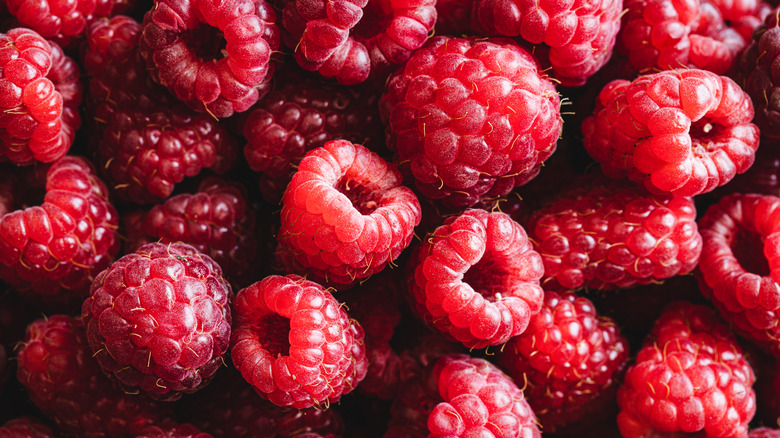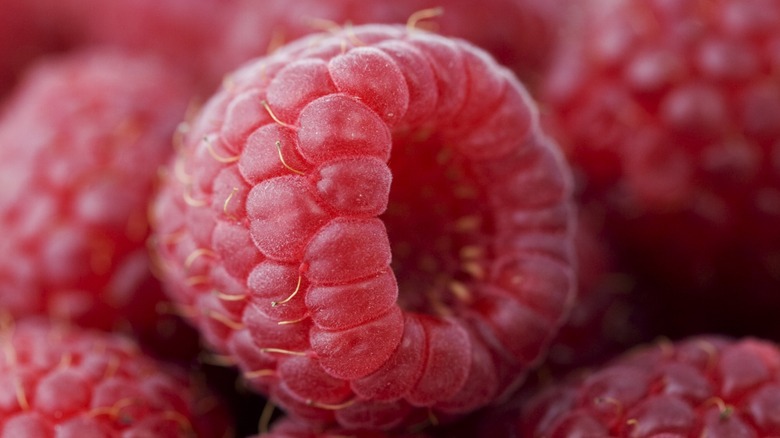The Science Behind Why Raspberries Are 'Hairy'
Picking out the freshest berries at the store can be a challenge. You've finally selected a flat of fresh raspberries only to discover tiny little hairs all over them. Don't worry, they're supposed to be there, and they're perfectly edible. Let's have a little talk about the berries and the bees. The hairs you see are leftover pistils, the stem-like parts of the raspberry bush's female reproductive organs. Raspberries are an aggregate fruit, meaning that a single raspberry is actually a collection of many tiny individual drupes. (A drupe is a type of fruit with flesh around a single hard seed, like a peach).
Before the berry starts to form, the raspberry bush covers itself with flowers. Each flower has around 100 pistils, and, for the fruit to properly develop, each individual pistil needs to be pollinated since each one forms a single drupe. Raspberries are partially self-pollinating, but they require pollinators, mainly bees, to carry the pollen around to each flower. The bees don't need to pollinate all 100, but a majority is needed to get a proper raspberry.
So, what does this have to do with the hairs? Well, what look like hairs are actually leftover pistils sticking out above the tasty red flesh that has formed around the ovary at their base. To get really specific, what you're seeing are styles, the part of the pistil that looks like a long tube connecting the ovary (which ripens to become the fruit) to the stigma at the top.
Another layer of hair
The styles aren't the only type of hair you may have noticed on your raspberry, though. There's a second kind of hair, which is much smaller and harder to see. Similar to the fuzzy layer on peaches or kiwis, raspberries have a protective layer of hair called trichomes. Trichomes are doing a lot, but, importantly, they are helping the fruit retain moisture, which leaves us with a deliciously plump raspberry to snack on. They also release certain chemicals that act as a natural insect repellent and help fight off fungal infections like mold.
Unlike styles, trichomes aren't leftover pieces of something else. By the time the raspberry fruit has formed, styles have served their purpose. Trichomes, on the other hand, are an integral part of the fruit's defenses. Most people eat raspberries for the juicy red fruit bits, but these style and trichome "hairs" that come along with them pose no risk to you, so bake yourself that raspberry coconut cake or enjoy them fresh without worrying!

